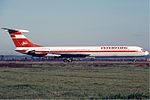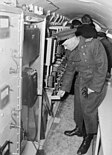Berlin Schönefeld Airport

Berlin Schönefeld Airport (Flughafen Berlin-Schönefeld ) (formerly IATA: SXF, ICAO: EDDB, ETBS) was the secondary international airport of Berlin, the capital of Germany. It was located 18 km (11 mi) southeast of Berlin near the town of Schönefeld in the state of Brandenburg and bordered Berlin's southern boundary. It was the smaller of the two airports in Berlin, after Berlin Tegel Airport, and served as a base for easyJet and Ryanair. In 2017, the airport handled 12.9 million passengers by serving mainly European metropolitan and leisure destinations. In the same year, the travel portal eDreams ranked Berlin Schönefeld as the worst airport in the world after evaluating 65,000 airport reviews. Schönefeld Airport also was the major civil airport of East Germany (GDR) and the only airport of the former East Berlin. On 25 October 2020 the Schönefeld name and IATA code ceased to exist, marking its closure as an independent airport, with large parts of its infrastructure being incorporated into the new Berlin Brandenburg Airport (IATA: BER, ICAO: EDDB) as its Terminal 5 with its sections renamed to K, L, M and Q.
Excerpt from the Wikipedia article Berlin Schönefeld Airport (License: CC BY-SA 3.0, Authors, Images).Berlin Schönefeld Airport
Ringstraße,
Geographical coordinates (GPS) Address Nearby Places Show on map
Geographical coordinates (GPS)
| Latitude | Longitude |
|---|---|
| N 52.378611111111 ° | E 13.520555555556 ° |
Address
Ringstraße
Ringstraße
12529 , Schönefeld
Brandenburg, Germany
Open on Google Maps











